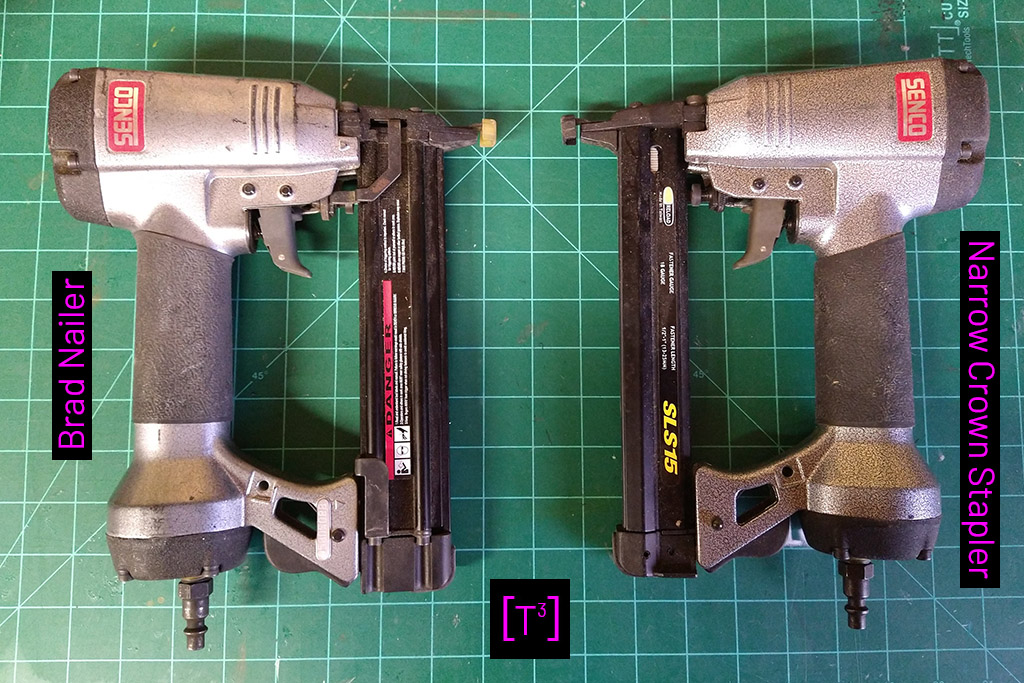The NC stapler and brad nailer are both small, handheld pneumatic tools common in theatrical scene shops. Both are fastening tools, they are often shaped similarly, and both need to be used in conjunction with wood glue. So, what’s the difference?

Remember to always wear eye and ear protection when using pneumatic tools. Never disable safety features and never shoot brads or staples at people.
Narrow crown staples are made of wire, usually 18 gauge. The staple is shaped like a flat bottomed “U”. The two legs of the staple come in a variety of lengths and are connected by the crown that this staple is named for. This stapler is favored for flat construction, making quick work of both broadway and hollywood style flat frames. Staples are often used to install trim and doors jambs. Because of the crown, staples have more gripping power than brads and result in a stronger hold.
Brad nails have a single shaft and a small flared head. brads are favored for finishing work because their small head leaves a very small hole that is hard to see. Brads may be used instead of staples to install trim in small venues where the audience is closer to the scenery. brads are sometimes used without glue for mock ups, temporary construction and to hold down jigs that will be removed later. It can be helpful to use a brad nailer to quickly tack together a project so that screws may be installed more easily. Brads are less likely to split wood than staples. On the other hand, brads have far less holding power and can easily slip through the soft pine that is often used in scene shops.

In short, narrow crown staples and brad nails both have their place in a well stocked shop. Both are used for lightweight construction and usually are used in conjunction with wood glue. If you are unsure if a tool is a brad nailer or an NC stapler, just open it up. If there are still brads or staples inside it’s a dead give away. If the tools are empty, look at where the fasteners are loaded into the tool. Brads always load in from the side, while staples will load in from the front or back, depending on the manufacturer. Get to know your tools, never be afraid to ask questions, and never stop learning.


Bonus: if you happen upon a nailer with small nails that don’t seem to have a head, this is a pin nailer. The delicate pins leave a nearly invisible hole but have almost no gripping power. This tool is used in fine woodworking and may have been “borrowed” from the prop shop. Proceed with caution.


